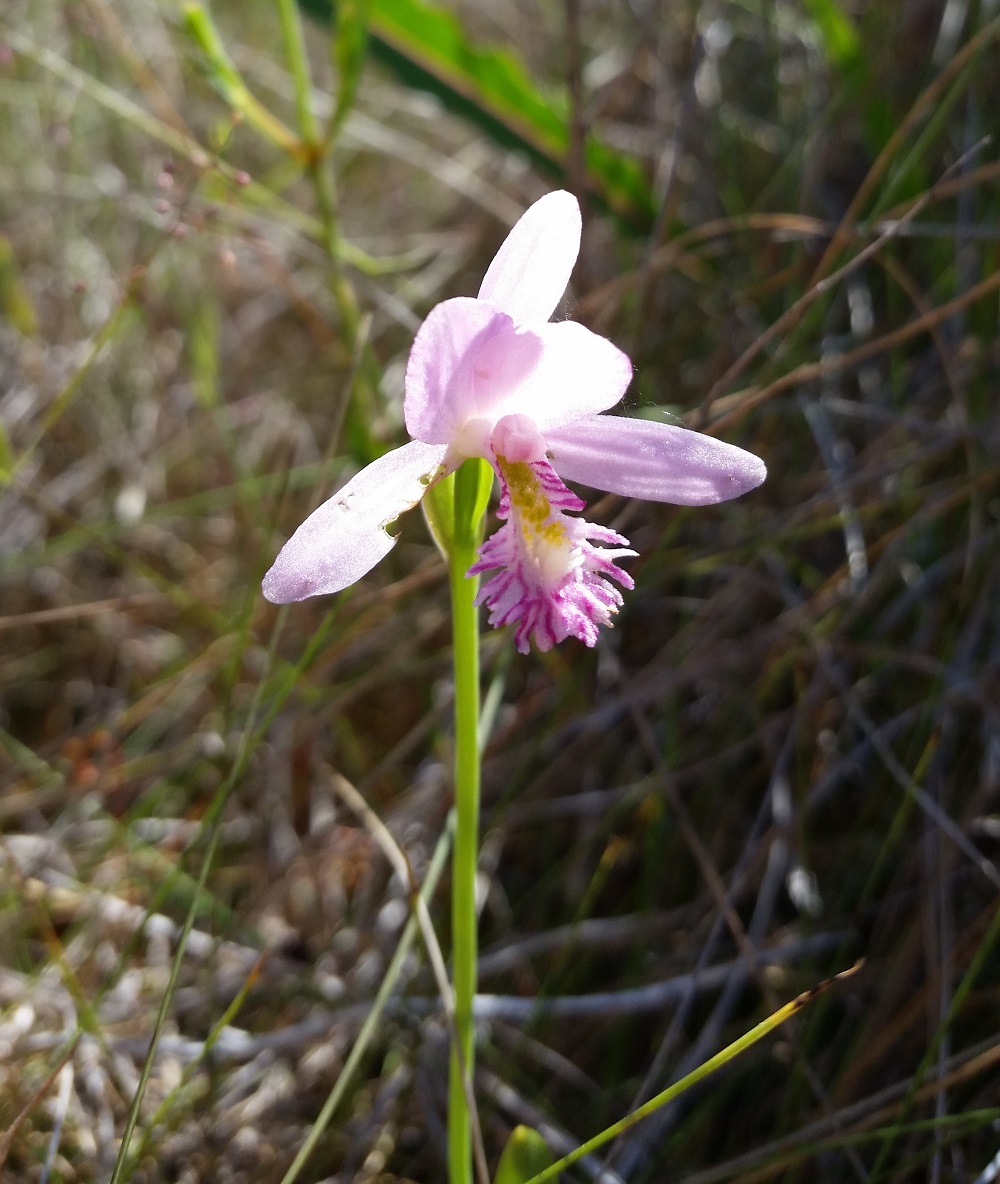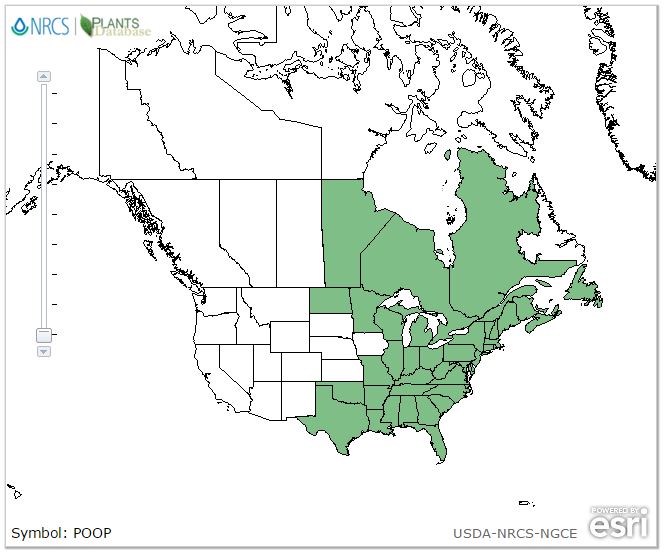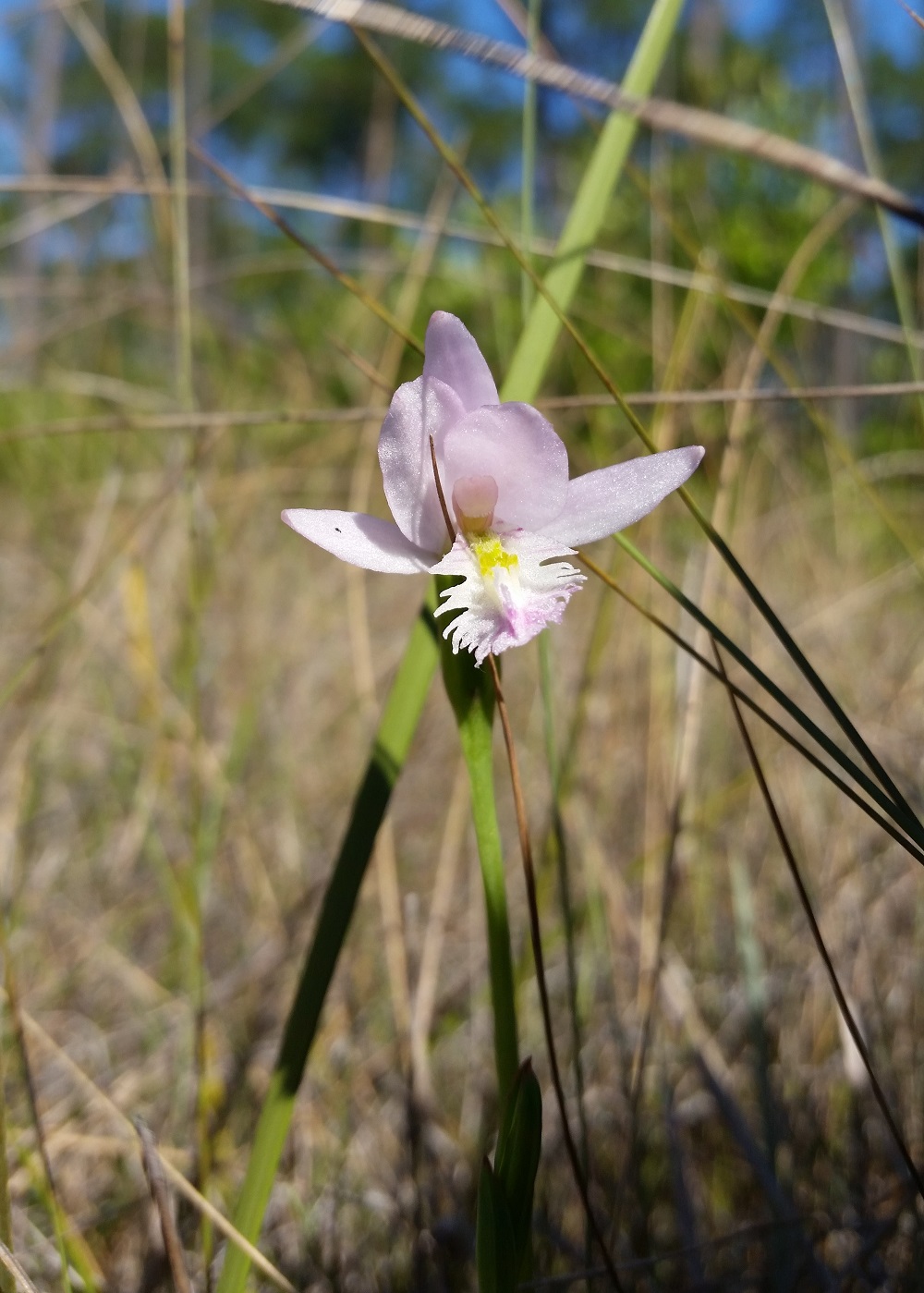Difference between revisions of "Pogonia ophioglossoides"
HaleighJoM (talk | contribs) (→Ecology) |
|||
| Line 34: | Line 34: | ||
<!--===Fire ecology===--> | <!--===Fire ecology===--> | ||
<!--===Pollination===--> | <!--===Pollination===--> | ||
| − | <!--=== | + | <!--===Herbivory and toxicology===<!--Common herbivores, granivory, insect hosting, poisonous chemicals, allelopathy, etc--> |
<!--===Diseases and parasites===--> | <!--===Diseases and parasites===--> | ||
| + | |||
==Conservation, cultivation, and restoration== | ==Conservation, cultivation, and restoration== | ||
Latest revision as of 14:03, 15 July 2022
| Pogonia ophioglossoides | |
|---|---|

| |
| Photo by Katelin Pearson | |
| Scientific classification | |
| Kingdom: | Plantae |
| Division: | Tracheophyta - Vascular plants |
| Class: | Magnoliopsida– Monocotyledons |
| Order: | Orchidales |
| Family: | Orchidaceae |
| Genus: | Pogonia |
| Species: | P. ophioglossoides |
| Binomial name | |
| Pogonia ophioglossoides (L.) Ker Gawl. | |

| |
| Natural range of Pogonia ophioglossoides from USDA NRCS Plants Database. | |
Common names: Snakemouth orchid, Rose pogonia, Addermouth
Contents
Taxonomic notes
Synonym: none
Varieties: none
Description
A description of Pogonia ophioglossoides is provided in The Flora of North America.
Distribution
Ecology
Phenology
It flowers from April to June with peak inflorescence in April.[1]
